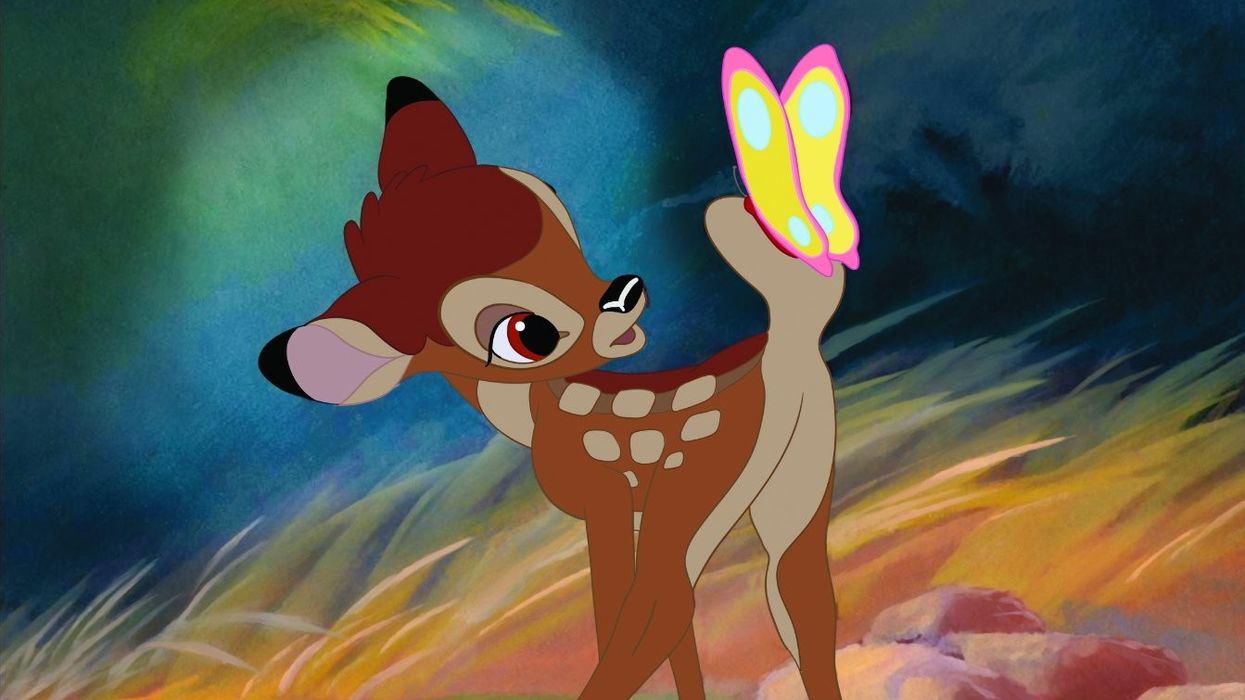4 Life Lessons from Tyrus Wong, the Largely Unsung Artist Behind 'Bambi'
There's still much to learn from the making of 'Bambi', even 75 years later.

This year marked the 75th anniversary of the Disney classic animated film Bambi, and while most people would certainly remember the story of Bambi herself first, and the emotional load that carried, the story would be little or nothing without that which made it an animated film—its mysterious and often moving artwork. You might not be able to readily identify the reasons behind these feelings, but a recent documentary is illuminating both about the classic film, and some life lessons we can glean from its creative force.
Currently streaming on PBS until October 6, Pamela Tom's documentary American Masters: Tyrus gives an in-depth look at Tyrus Wong, the artist who created the distinctive, indelible look of the film, only to have his acknowledgment for the accomplishment delayed by far too long. Wong was an invaluable artist for Disney, Warner, Hallmark Cards, and numerous other American venues. He exhibited his artwork alongside some of the twentieth century's greatest practitioners. He led a long, vibrant life (being the oldest living Asian American man at the time of his death, at age 106). And yet it is only in recent years that he has begun to receive his due.
If you work hard, you will create a legacy.
There are a number of lessons one might learn from watching the film, or perhaps you could call them things to store away. Of these, the loudest is this: If you are creative, if you're someone who likes to make things that will last after you're gone, be sure you do one thing steadily: work. If you work hard, you will create a legacy, regardless of whether you get any acknowledgment during your career.
Some other life lessons from Wong:
1. One discipline leads to another
One of the most salient qualities in Wong's work on Bambi and elsewhere is its fluidity, the way one form flows fairly easily and lightly into another. The documentary indicates that Wong's father instructed him in the art of calligraphy from a very young age, and the skills necessary to write well-formed letters—the way you hold the brush; the importance of an even, consistent line—stuck with Wong throughout his adult life as an artist. He took what he had learned as a child and used it to his benefit later on.
2. Enthusiasm counts more than details
It is clear, if you look at enough of Wong's work, that he privileged the individual figure in the foreground over the details in the background. He didn't like to get lost in detail work, feeling that everything besides his primary figure should go towards communicating the enthusiasm he had when he approached painting the original image. This was an attitude pervasive in Chinese art, according to one historian quoted in the film: enthusiasm is everything, and details are negligible.

3. Master the basics
The film is very clear on how Wong started at Disney; he was part of a group of artists called "in-betweeners." Their job was to take the sketches of cartoon characters made by the more advanced employees and polish them, filling in the details and nuances that we might assume all came from one artist's hand. The job required tremendous technical facility but it also taught Wong a lot about the way characters were constructed, and so when it came time for him to work on Bambi, he brought a wealth of knowledge to the page. Lesson learned? Don't be hesitant to immerse yourself in basics, even if they seem elementary to you; their mastery will pay off in the future.
4. Don't let adversity get in your way
Sure, the statement sounds like a platitude. But if there were ever anyone whose life was a testament to working against adverse circumstances, it would be Wong. He came to the United States from China as a child with his father, passing through San Francisco's Angel Island facility, which was designed, according to many historians, to keep Asian immigrants out of the United States through draconian examinations and other bureaucratic blocks. He grew up extremely poor, which would shape his life as an artist; what was of paramount importance to him was working for survival, regardless of where he was working.
Wong faced a considerable amount of racial bias throughout his life; he recounts a story of how one of the heads of Republic Pictures made a slur towards him on his first day at the company. But Bambi may have provided the occasion for the saddest story of all; following a strike at Disney, during which he kept working when many of his colleagues protested, he lost his job, receiving only secondary credit when, in fact, he conceptualized the film's entire appearance. Wong was paying the price for in-house resentment of "scabs." And yet, still, he continued working, and there's a lesson in that for any artist.
















